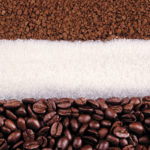Australian dollar retreated against its US counterpart on trading Wednesday, following data, that showed a gauge of consumer confidence in Australia weakened this month, while home lending in the country remained unchanged during January.
AUD/USD touched a daily low at 0.8948 at 1:22 GMT, also the pairs lowest level since March 5th, after which consolidation followed at 0.8962, falling 0.18% for the day. Support was likely to be found at March 5th low, 0.8941, while resistance was to be encountered at psychological level of 0.9000.
According to a survey by Westpac Banking Corp. – Melbourne Institute, the gauge of consumer sentiment for Australia dropped 0.7% to reach a reading of 99.5 in March. The index tumbled for a tenth consecutive month, as households probably expressed concerns over nations economic development and the security of jobs. This result followed another 3.0% decrease in the prior month. Values below the key level of 100.0 indicate that the number of pessimists is greater than that of optimists.
“The consumer sentiment data added to concerns around what’s happening” in China, said Derek Mumford, director at Rochford Capital, a currency risk-management company in Sydney, cited by Bloomberg News. “Any spikes in the Aussie will be heavily sold into.”
In addition, the number of home loans in the country remained flat in January in comparison with December, when loans dropped by a revised down rate of 3.3%. Experts had expected that the number of loans for house and apartment purchases will increase 0.5% in January.
The value of investment loans to individuals and companies in Australia decreased 3.3% in January on a monthly basis, after in December it rose 2.5%.
Meanwhile, employers in Australia probably added 15 300 new jobs in February, according to the median estimate of experts, after a month ago economy lost 3 700 jobs. At the same time, the rate of unemployment in the country probably remained steady at 6.0% last month. The official numbers are expected to be released on March 13th.
The yield on Australian three-year bonds dipped one basis point, or 0.01 percentage point, to reach 2.93%. Australian government sold 7 billion AUD (6.3 billion USD) of 12-year bonds in the countrys largest bond sale on record on Wednesday.
Traders saw a 10% probability that the Reserve Bank of Australia will reduce its benchmark interest rate from the current all-time low of 2.50% by July, according to swaps data compiled by Bloomberg.
The MSCI Asia Pacific Index of stocks lost 1.5%, while prices of iron ore, Australias largest export, fell to lows unseen in 1.5 years.
Elsewhere, the Aussie was steady against the euro, with EUR/AUD cross up 0.08% for the day to trade at 1.5456 at 7:49 GMT. AUD/NZD was losing 0.26% on a daily basis to trade at 1.0571 at 7:51 GMT. The pair earlier touched a daily low at 1.0557, which has been the lowest point since January 27th.
Reserve Bank of New Zealand is expected to announce its interest rate decision later in the day, with the median estimate of experts pointing to a raise by 0.25% to 2.75%. This would be the first increase in rates since March 9th 2011. In case the benchmark interest rate is raised, demand for the kiwi dollar will certainly be underpinned.





